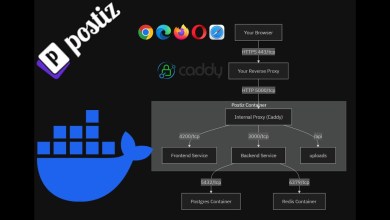LXCs vs VMs – What Was My Rationale?
So in my last video, we took a look at what I’ve got running in my home lab back here, and we briefly discussed the hardware.
Last video:
Then we talked about the two Proxmox servers I’ve got for production and the one I’ve got for testing and development. I don’t develop, but it’s for testing and tutorials, that sort of thing. I guess that’s the better way to word that.
In the comment section of the last video I released about all of this stuff, a couple of people asked what was my rationale in deploying LXCs or Linux containers for each of my individual services rather than throwing up a couple of VMs, installing Docker, and then putting all of my services in those couple of VMs.
And I think that’s a great question.
We discuss my rationale of my setup in this video.
Blog post/transcript:
/=========================================/
Additional info on LXCs and VMs:
✅ LXC Pros:
– Lightweight: LXCs share the host system’s kernel, making them much faster to start and use fewer resources than VMs.
✅ LXC Cons:
– Limited Isolation: They provide some isolation, but since they share the kernel, a security issue in one container could potentially impact others.
-Linux-only: LXCs can only run Linux distributions that are compatible with the host’s kernel.
✅ Use for VMs:
– Running applications that require a specific operating system not compatible with the host.
– Situations where a high degree of security and isolation is critical.
– Running software that requires direct access to hardware resources.
/=========================================/
Get early, ad-free access to new content by becoming a channel member, or a Patron!
✅
✅
All My Social Links:
✅
Join Discord!
✅
[ad_2]
source


